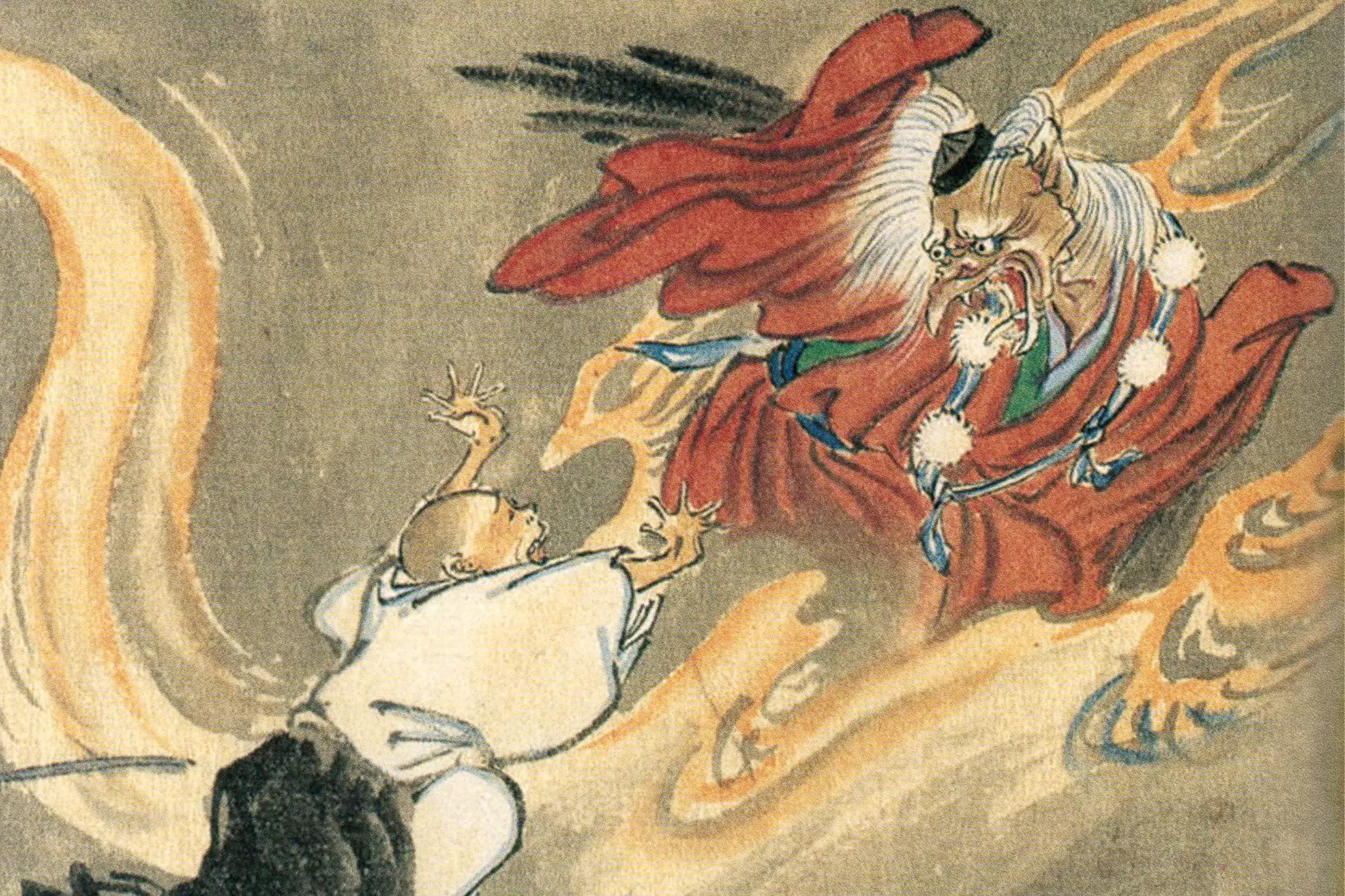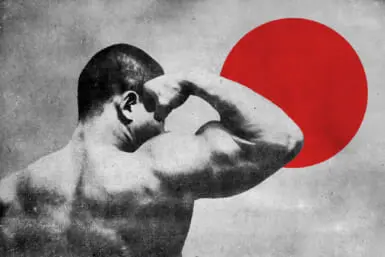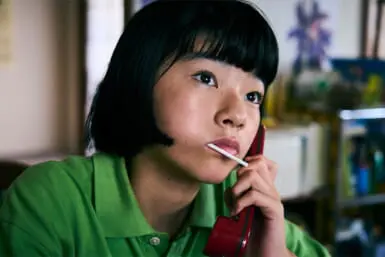Demon Slayer, also known as Kimetsu no Yaiba, has become one of the biggest media franchises in the world. What is the secret of this deceptively simple anime about a young boy hunting human-eating demons to avenge his family? Well, it might be the fact that it is strangely educational. For one, it takes place in Japan during the Taisho period (1912–1926). This is a setting we rarely see in anime. The country at the time had settled down after the turmoil of the Meiji restoration and dedicated itself to modernization and Westernization. This is all addressed in the fantasy series. A recent addition to the show, however, goes further, offering lessons in Japanese mythology, history and language. Here’s what audiences can learn from the Demon Slayer character, Hantengu.
Half-Tengu’s Full-on Lesson About Japanese Folklore
Hantengu is a demon and one of the main antagonists of the third season. His name literally means “half-Tengu,” referencing the Tengu supernatural creature from Japanese mythology and the character’s unique ability to split into multiple bodies. Normally, when you cut off a demon’s head on Demon Slayer, it dies, but with Hantengu, doing so makes him transform from a pitiful, emaciated monster into a fearsome monk-like creature named Sekido and, after one more division, into a bird-like creature called Urogi. Incidentally, those are also the two main forms that Tengu take in Japanese legends.
Sekido, Karaku, Urogi, and Aizetu
The Swordsmith Village is under attack in Episode 3 of Demon Slayer: Kimetsu no Yaiba Swordsmith Village Arc streaming now only on @Crunchyroll! pic.twitter.com/qOaRJ02aUr
— Demon Slayer: Kimetsu no Yaiba (English) (@DemonSlayerUSA) April 26, 2023
Tengu are actually imports from Chinese mythology, where they are malevolent dog-like beings. When they arrived in Japan, though, they were first associated with foxes and then birds such as black kites, which even today are known for things like snatching food from people’s hands. That might be how the Japanese Tengu got a reputation for being mischievous, including their affinity for tricking monks into eating feces? OK. That explains the bird-like, happy-go-lucky Urogi, but what about Sekido? How did tengu go from winged frat bros to men of the cloth?
During the Edo period (1603–1868), Tengu were elevated to the status of anthropomorphic saints or gods, and no one really knows why. One theory says that it goes back to a Tengu portrait by Kano Motonobu, who first depicted the entity as a monk-like massive human after it came to him in a dream. Mix that with legends about the Tengu’s powerful magic and, from around the 17th century, the creatures started to be depicted as dignified guardians of mountains, who also happened to sport huge noses. This is the version you can still find on sake labels and Japanese festival masks.
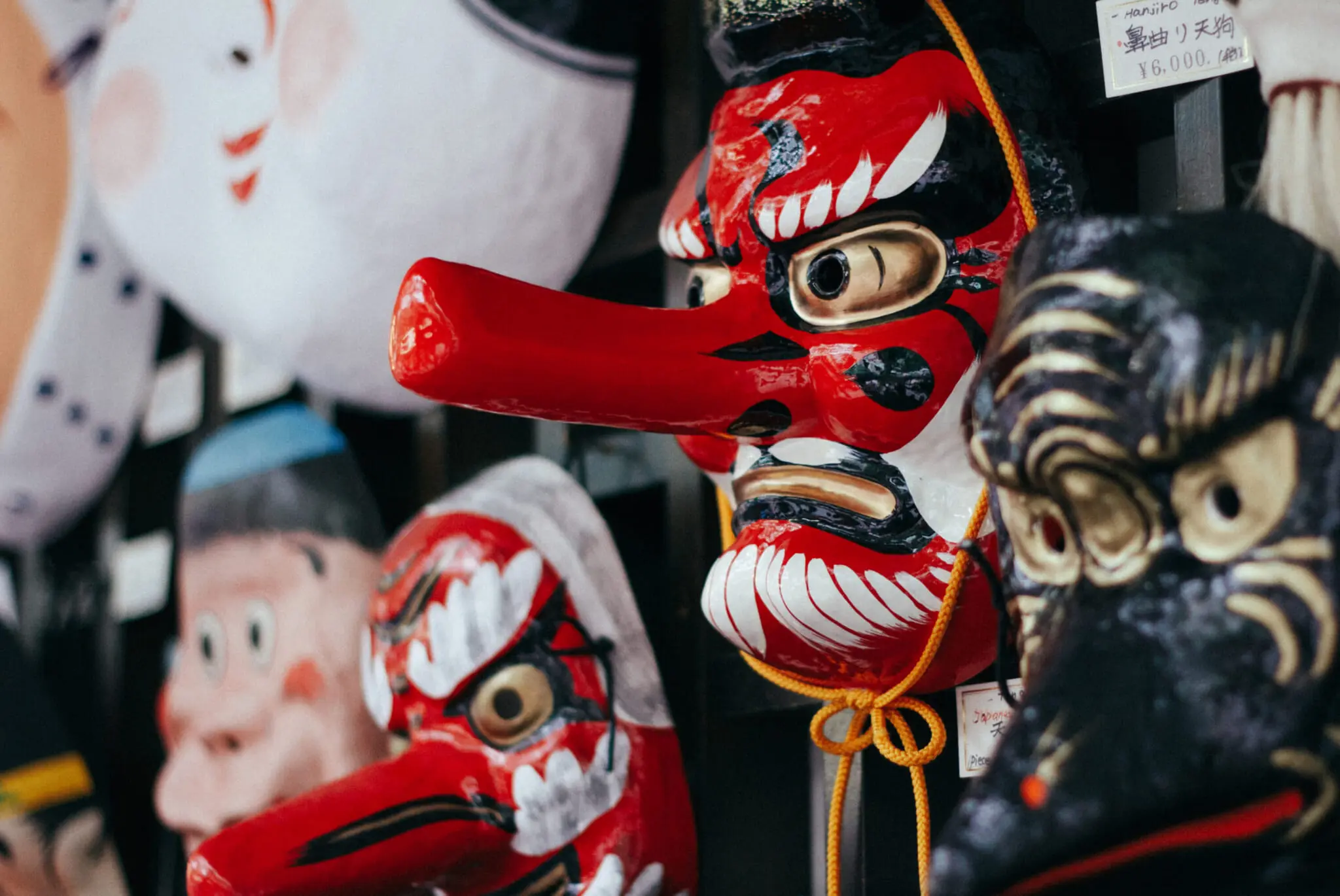
Fans of the Tengu
The large-nosed Tengu quickly became associated in Japanese art with a magic fan, the same kind the demon Karaku, born from Hantengu’s first split, uses to create powerful gusts of wind to blow Demon Slayers away. The mythical Tengu fans had similar powers but they could also shrink and grow noses. Almost every Japanese prefecture has its myth about the magical item, but the funniest one comes from Miyagi.
When working in a forest one day, a woodcutter named Toki came across a Tengu who offered him his rhinoplasty fan in exchange for a share of the profits he’d make from it. The process was very simple. Flap the front of the fan to grow a nose and flap its back to shrink it. Toki quickly made a bundle until one day he had to relieve himself in a forest with nothing to wipe himself with afterward. In a moment of desperation, he decided to use the back of the fan.
And so, the next time Toki was demonstrating the power of the fan to potential customers, he successfully made his nose huge, but when he tried to reverse it, he discovered that the back of the fan no longer worked. In the end, Toki became a laughingstock because the moral of this story is that those who deviate from societal norms will be shunned. Either that or something about not getting poop on a gift from a god-demon.
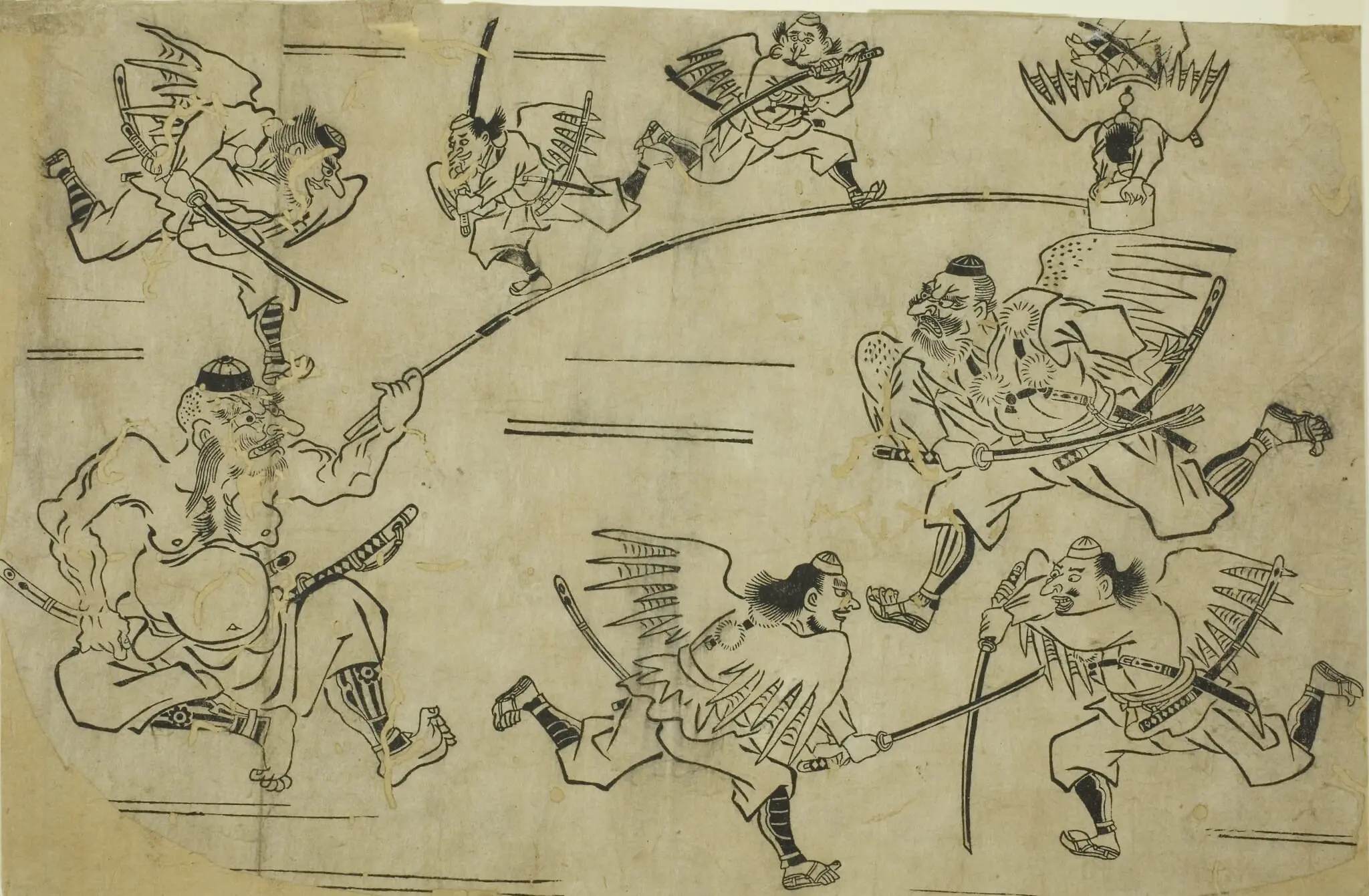
Woodblock print artwork depicting the Tengu King training several tengu (Source: Wikimedia Commons)
Four-Letter Wisdom
Hantengu ultimately splits into four demons in the anime: Urogi, Sekido, Aizetsu and Karaku, with each one representing one of his emotions, like in a gritty remake of Inside Out directed by David Fincher. Urogi represents joy, Sekido is anger, Aizetsu is sorrow and Karaku is pleasure. And the really interesting thing is that if we take the characters for those emotions and line them up together in the above-mentioned order, we get the phrase Kidoairaku, which is actually a yojijukugo, or a four-character idiom.
Yojijukugo are a huge part of the Japanese language that also represent the beauty and power of kanji where a single character has an entire meaning behind it. Thanks to this, you can stitch four of them together to express surprisingly complex thoughts and ideas. Some of them will even be familiar to people from the west, like issekinicho (一石二鳥), which is made up of characters for one, stone, two and bird. Two birds with one stone. Clever. So, what does kidoairaku (喜怒哀楽) mean? Exactly what it says on the label: joy, anger, sorrow and pleasure, which is apparently the entire spectrum of human emotions.
At least, that’s what it says in the Book of Rites (also known as the Liji), a collection describing Chinese religious practices and social norms from the eighth to the fifth century BC. It’s credited to Confucius and makes up a core part of the Confucian canon which was read widely by Japanese intelligentsia and even commoners due to the high levels of literacy during the Edo period. It doesn’t seem like these details will have a big impact on the plot of Demon Slayer, but you must give the series props for sneaking in a lesson about East Asian philosophy in between kids cutting heads off demons. That’s impressive, however you slice it.

